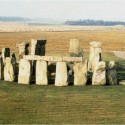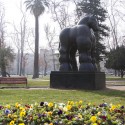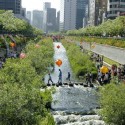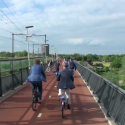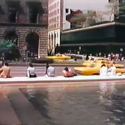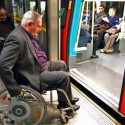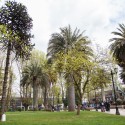Publicación de la semana: “Making the metropolitan landscape – Standing firm on middle ground”
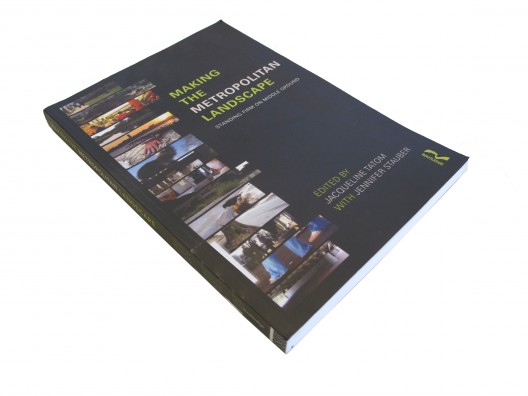
“Making the metropolitan landscape – Standing firm on middle ground”
Editado por: Edición Routledge
Idioma: Inglés
ISBN: 978-0-415-77411-6
Año: 2009
Autor: Varios, editado por Jacqueline Tatom y Jennifer Stauber
Dónde encontrarlo: Se puede consultar parte del libro en este link, y se puede comprar a través de Amazon.com
Sobre el libro:
Hoy en día las ciudades norteamericanas se perciben como homogéneas, replicables, genéricas y extensas, reflejando un modelo económico y político actual en la construcción de metrópolis. Este libro, un compendio de varios autores emergentes norteamericanos, trata de enfocarse en la otra postura y poner en valor la riqueza de la ciudad americana como un paisaje metropolitano. De esta manera, el libro se convierte en una especie de guía con propuestas y reflexiones variadas acerca de las oportunidades de diseño de las ciudades estadounidenses actuales, acortando la brecha entre teoría y práctica y creando un discurso más bien pragmático referente al urbanismo norteamericano.
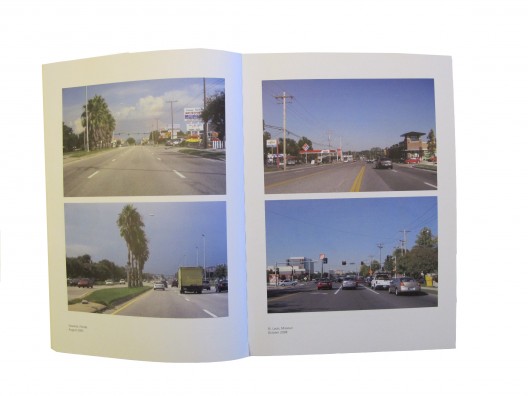
Contenidos:
Photo Essay. Authenticity in the middle ground
Ackownledgments
Editor’s note
Introduction
Part One. Towards a metropolitan landscape
Chapter 1: The spatial transformation and restructuring of American cities – Peter G. Rowe
Chapter 2: It’s time for comedy – Jacqueline Tatom, edited by Andres Kahn
Chapter 3: Agrarian urbanism and the aerial subject – Charles Waldheim
Chapter 4: The uses of history in urban design – Eric Mumford
Chapter 5: Urbanism by numbers: A quantitative approach to urban form – Anne Vernez Moudon, Chanam Lee
Part Two. Towards a metropolitan urbanism
Chapter 6: Practicing pragmatism in urban metropolitan design – Gwendolyn Wright
Chapter 7: Flexibility to resiliense: Directions for contemporary practice – Hashim Sarkis
Chapter 8: Planning the city multiple – Ed Robbins
Chapter 9: Citizenship and architecture: Notes on the order of the American city – Alan J. Plattus
Part Three. Making the metropolitan landscape
Chapter 10: Integrating urban design and educational reform in the post-industrail American city: Paterson, New Jersey, as a City of Learning – Roy Strickland
Chapter 11: Drawing, persuasion, politics: A case study in the California Delta – Jane Wolff
Chapter 12: Urban decisions / urban designs – Charlie Cannon
Chapter 13: Beijing sketchbook – James Wines
Part Four. Programs for a metropolitan urbanism
Chapter 14: Programs for a metropolitan urbanism – Jacqueline Tatom, edited by Andrea Kahn
Notes on contributors
Figure credits
Index
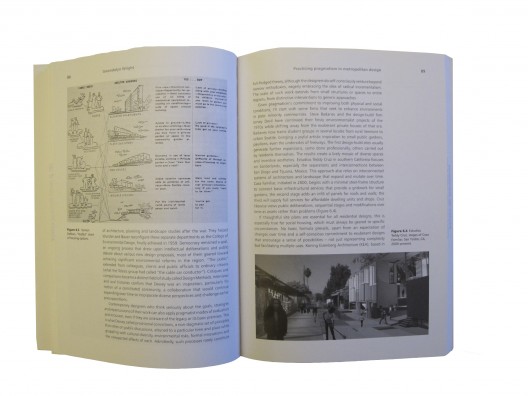
Extracto:
“The pastoral and the epic, like all narratives, only tell part of the story, overshadowing other narratives unfolding in the urbanized regions of the United States today. Their power and their seductive qualities derive from a root structure that favors simplification when adressing cultural circimstances. The pastoral relies on the urbanite’s presumed desire to live a simpler life in a natural setting, at a remove from the complexities and tribulations of the city. In the epic, the machine leaves waste in its wake as it advances relentlessly westward beyond the city, stripping the landscape of environmental resources and capital. While American urban culture today presents unavoidable complexities, both these accounts celebrate disengagement from urban life and overlook the richness of urban culture.”
“La pastoral y la épica, como todas las narrativas, solo cuentan parte de la historia, opacando otras narrativas que se despliegan hoy en las regiones urbanizadas de Estados Unidos. Su potencia y sus cualidades seductoras derivan de una estructura básica que favorece una simplificación cuando se refieren a circunstancias culturales. La pastoral depende del presunto deseo del urbanita de vivir una vida más simple en un ambiente natural, alejándose de las complejidades y tribulaciones de la ciudad. En la épica, la máquina va dejando desperdicio en su estela mientras avanza inquietamente hacia el oeste más allá de la ciudad, desmantelando al paisaje de sus recursos medioambientales y capital. Mientras hoy la cultura urbana americana presenta complejidades inevitables, ambos reportes celebran la retirada de la vida urbana y pasan por alto la riqueza de la cultura urbana.”

